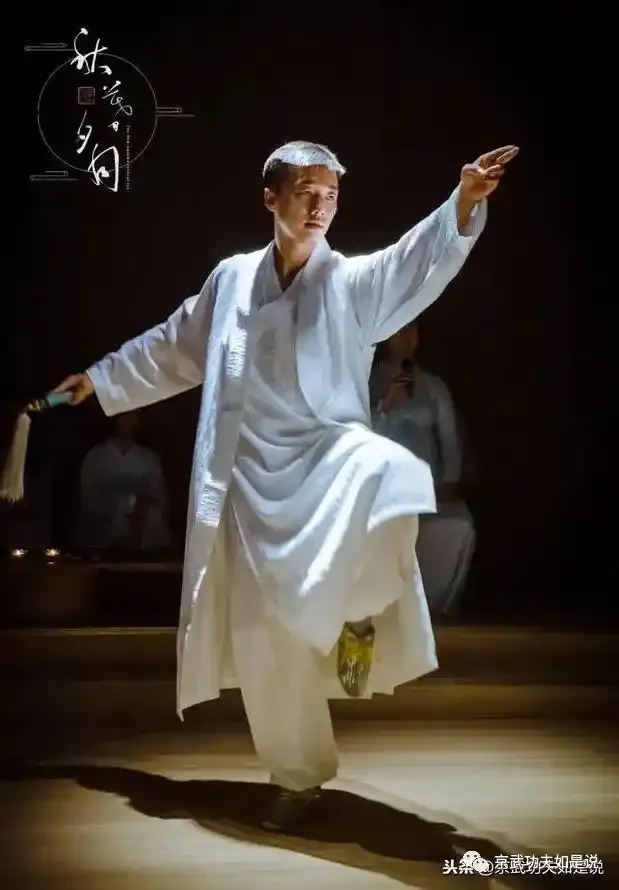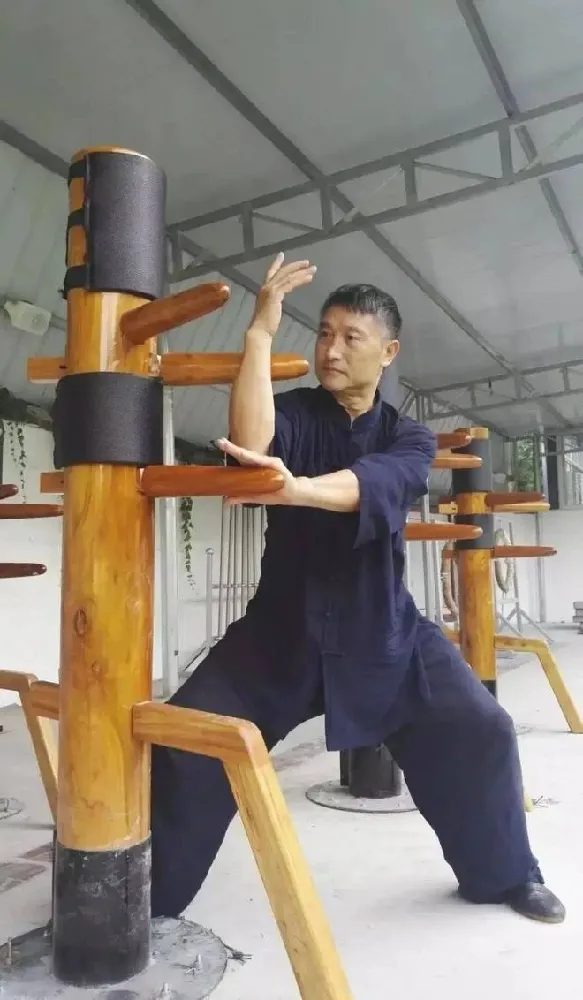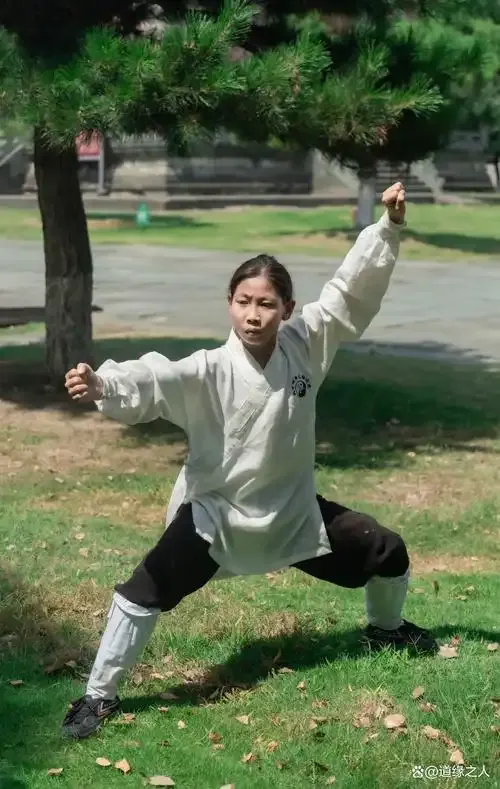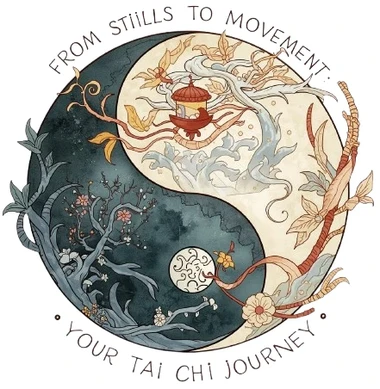You've seen the slow, graceful movements from our core guide to Wudang Kung Fu. You've absorbed the philosophy of softness we detailed. And if you're like most martial artists, a big question pops into your head: "Can this actually work when it counts?"
Let's cut to the chase. The answer is a resounding yes. But it works in a way that turns conventional fighting wisdom on its head. Wudang Kung Fu isn't about being weaker; it's about being smarter. It's the art of making your opponent's strength their greatest weakness.
So, how does a so-called "soft" art deliver devastatingly practical results?
Let's pull back the curtain.

The Core Combat Principle: Be Like Water
Bruce Lee famously said it, but Wudang has been practicing it for centuries. Water is fluid and yielding. But it can wear down stone and sweep away buildings. This isn't just a pretty metaphor; it's a tactical blueprint.
In a confrontation, a Wudang practitioner doesn't meet force with force. That's a contest of mass and velocity, which you might lose. Instead, we absorb, redirect, and unbalance.
Think of a baseball pitcher. He doesn't stop the ball with his bare hand; he moves his glove backwards at the moment of catch, absorbing the impact over a longer distance. Wudang combat is that same principle, applied to every push, punch, and grab. You "catch" the attack and guide it into emptiness.
Your Secret Weapon: Silk Reeling Power
We touched on this in the core article, but now let's get tactical. Chán Sī Jìn (缠丝劲), or Silk Reeling Energy, is the engine behind Wudang's power. It’s not mystical—it's biomechanical.
This spiraling power allows you to:
- Penetrate Guards: Your force isn't a straight line; it's a drilling, corkscrew motion that slips through defenses. At Tai Chi Wuji, we start beginners with simple rotating hand drills to build this neural pathway.
- Control Limbs: A spiraling contact on your opponent's arm creates a controlling, locking effect with minimal effort.
- Generate Power from Zero Distance: You don't need a wind-up. The power comes from the core's rotation, making your close-range strikes surprisingly powerful.
From a Tai Chi Wuji training journal: "The first time you correctly apply Silk Reeling to a partner's push, it feels like magic.
Their solid, linear force just spins off you, and they're left stumbling past, completely vulnerable. It’s a ‘holy cow, this stuff is real’ moment."

The Wudang Toolbox: Three Tiers of Combat
Wudang offers a complete range of engagement, from subtle redirection to decisive finishing.
Tier 1: Control & Unbalance (The Tai Chi Domain)
This is where you master the art of non-resistance. The primary training tool here is Push Hands (Tuī Shǒu). It's a two-person drill that looks like a slow, gentle dance but is actually a high-stakes game of sensitivity and strategy. What most beginners don't realize is that Push Hands isn't about pushing at all - it's about learning to 'listen' with your whole body.
- "Listen" to your opponent's force (Tīng Jìn).
- Neutralize their push the moment it lands.
- Find the slightest imbalance and exploit it.
The goal here isn't to knock the other person out. It's to uproot them—to break their posture and structure so completely that they have no power left. A fighter who is off-balance is a fighter who has already lost.
While Tai Chi teaches you to yield and redirect, sometimes you need a more direct approach. This is where Xingyiquan comes in - it's the art of decisive interception.
Tier 2: Direct Interception (The Xingyi Domain)
Sometimes, yielding isn't the best option. Sometimes you need to stop a threat directly and efficiently. That's where Xingyiquan comes in.
Xingyi is the "straight-to-the-point" cousin of Tai Chi. It's built on the Five Elements, each a specific, explosive attack strategy. For example:
- Pī Quán (Splitting Fist): A crushing, axe-like downward force.
- Bèng Quán (Drilling Fist): A shocking, upward drilling fist.
Xingyi teaches you to generate overwhelming power in a straight line, shattering an opponent's structure with a single, well-placed blow. It's the embodiment of the principle: "When the time comes to be hard, be unbreakably so."
Tier 3: Evasion & Misdirection (The Bagua Domain)
What if you don't meet force head-on, and you don't intercept it? You make it irrelevant. Baguazhang is the art of constant motion. Its signature is "walking the circle"—using intricate, spiraling footwork to stay off your opponent's center line.
A Bagua fighter is never where you expect. They evade your attack not by backing up, but by circling behind you. One moment they're in front of you, the next, they're striking your flank or back. It is, without a doubt, one of the most disorienting and psychologically unsettling styles to face.

Myth vs. Reality in Wudang Combat
- Myth: "Wudang is too slow for real fighting."
- Reality: The slow practice builds neural pathways for lightning-fast response. The speed is in the application, not the training.
- Myth: "You need to be passive and wait."
- Reality: It's proactive sensitivity - you create openings by responding intelligently to pressure.
How to Start Thinking Like a Wudang Fighter
You don't need to master all three systems to start applying the principles. Begin with this mindset shift:
- Don't Resist, Receive. When pushed, your first instinct should be to receive the information (Where is the force going? How strong is it?), not to push back.
- Root and Rotate. Ground your stance. Let attacks be dissipated by your rooted, rotating body, not braced by your muscles.
- Seek the Back. Always move to your opponent's side or back. The back is their weakest structural and visual angle.
Your First 90 Days in Wudang Combat
- Weeks 1-4: Focus entirely on the waist-turning drill above
- Weeks 5-8: Introduce basic Push Hands sensitivity drills
- Weeks 9-12: Begin applying the principles to simple self-defense scenarios
Ready to Test These Principles?
This can all feel abstract until you feel it. We challenge you to find a partner and try this simple exercise from our Tai Chi Wuji foundational curriculum:
- Have your partner push steadily on your chest.
- First, resist stiffly. Notice how much effort it takes.
- Now, as they push, subtly turn your waist and let their hands slide past your center. Don't step back; just rotate.
Feel the difference? That small rotation just used their force against them. That's the seed of Wudang combat. Remember: start gently and focus on the feeling rather than force. When you're ready to explore the next level of this skill, our Push Hands fundamentals course builds directly on this foundation.
We want to hear about your experience! Did you try the exercise? What was your 'Aha!' moment?
Share your story and your biggest combat questions in the Tai Chi Wuji forum. And if you're wondering how these combat skills connect to the health and meditation aspects we covered in The Complete Guide to Wudang Kung Fu, that's exactly the kind of deep discussion our community thrives on.
Let's demystify internal power, together.
FAQ
Is Wudang Kung Fu effective against other martial arts like Boxing or BJJ?
Its effectiveness lies in its unique strategy. Against a boxer's punches, Wudang uses evasive footwork (Bagua) and redirection (Tai Chi) to avoid the direct force. Against a BJJ grappler, it uses upright grappling, joint manipulation, and maintaining balance to prevent being taken to the ground. It's a different "game," but its principles are combat-proven.
Can I only learn Wudang for combat, without the philosophy and health parts?
You can emphasize the combat applications, but the "internal" power—the relaxed strength, sensitivity, and root—is built through the foundational practices (Qigong, Zhan Zhuang). Trying to skip to the "fighting" without the "internal" is like trying to build a house without a foundation. The philosophy is the operating manual for the body mechanics.
What's the most practical Wudang style for a beginner interested in self-defense?
Starting with the core principles of Tai Chi and Push Hands is most practical. It teaches you how to deal with force and maintain your balance under pressure—the two most critical skills for self-defense. The skills are highly transferable and less reliant on athleticism.
How do you practice combat without getting hurt?
We use progressive, controlled drills. Push Hands starts with very low force, focusing on sensitivity. Applications are practiced slowly with a compliant partner. As skill increases, resistance and speed are added safely. It's a methodical, intelligent approach to training.
